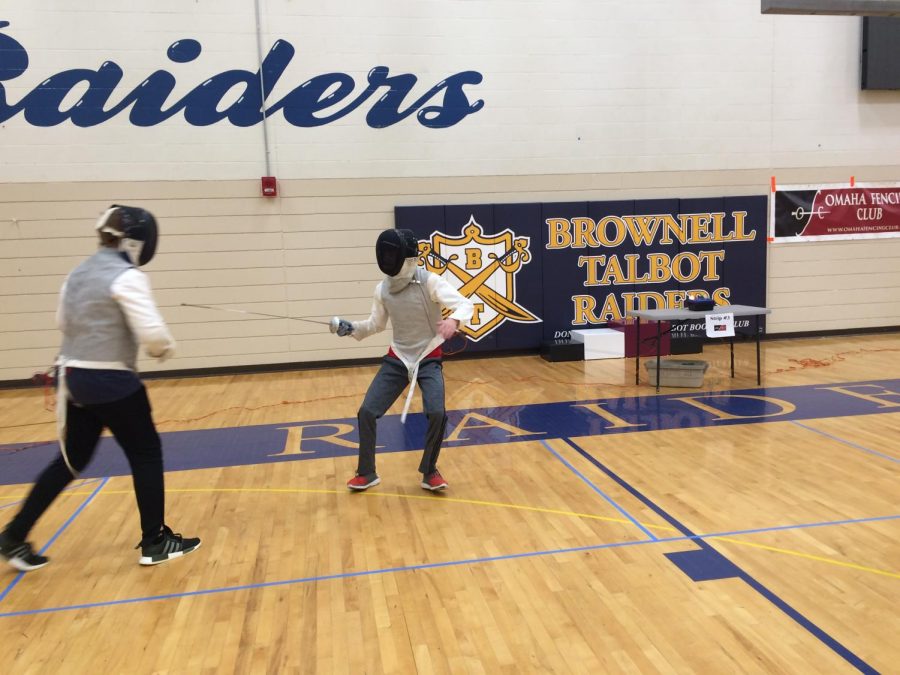Sophomores find fulfillment in fencing, compete around Nebraska
September 19, 2019
Swordsmanship is not a very popular hobby in the States. There’s no advertised fencing Super Bowl or longsword World Cup. Despite this, the sport’s influence has made it to Central. Sophomores Linus Dyer and Zachary Sechser are avid swordfighters.
Dyer has fenced foil, or, as he calls them, the “skinny, floppy swords” for over three years. He moved to fencing from soccer and swim team after looking for a more individual, unique sport.
“I really like board games and stuff like that, and I didn’t want something that was just physical,” Dyer said, “Fencing, it’s a physical sport, but it’s also kind of a mental sport as well.”
He fences once or twice a week with Omaha Fencing Club.
Sechser wields the longsword and messer, a short, one-handed sword, at a Historical European Martial Arts Alliance (HEMAA) club called Kunst des Fechtens. He began sword fighting late last May with his father.
“I’ve always liked swords and knights and stuff like that,” Sechser said. “Also, because my dad kind of introduced the idea to me. It’s sort of like bonding, but we have loads of fun there too.”
Kunst des Fechtens goes beyond simple swords and into the dagger and spear, though Sechser is just beginning to learn messer. He says that his club is more historical than anything, going as far as to read the manuscripts and studies of ancient swordsmen.
Dyer and Sechser warn that real fencing isn’t quite what the movies show.
“When I tell people I fence foil or épée or sabre, most of the time people will automatically think of The Princess Bride,” Dyer said, “It’s obviously not theatrical. If you were to watch it, it would not be as interesting.”
There are various swordsmanship competitions around Omaha and Nebraska. Spring Steel and Fall Steel are two yearly fencing tournaments that take place at Brownell-Talbot. Cornhusker State Games also hosts fencing competitions during its nine-day run.
Unlike some other sports at the Cornhusker State Games, fencing is a very mental sport.
“I have to be aware of what the other person’s doing and aware of myself.” Sechser said. “I have to be calm, but at the same time I need to be assertive with how I’m fencing.”
“You have to, not predict your opponent, but be able to respond to them easily and to be able to find patterns,” Dyer said. “You want to be unpredictable. There’s different strategies to fencing and the more you fence with other people, the more you figure out their specific strategies. I have my own. In the moment, there’s lots of things that go into it.”
However, that doesn’t mean there’s not a physical aspect to fencing. It may just involve more subtle muscle work than brute force.
Dyer said, “There’s a lot of different things that go into fencing. You’re thinking about your balance. You’re thinking about your footwork. In fencing, footwork is different. It’s designed for balance. It’s designed for lots of starts and stops really quickly and changing direction, and you have to account for that.”
Though they wear protective gear on their heads, necks and torsos, fencing is a contact sport, and injuries are bound to happen. Old or poorly made blades and gear can result in swords breaking and piercing gear. All the competition and practice blades are dulled on the tips and edges and some “synthetic” swords are made of plastic for beginners.
Both Dyer and Sechser said they would like to continue fencing through college and beyond. For them, the social aspect is as important as the sport itself.
“I know some people I’ve fenced with for the whole time I’ve been doing it and I make some good friends,” Dyer said. “It’s a fun sport. I feel like it’s my favorite sport out of the three or four sports I’ve done.”

